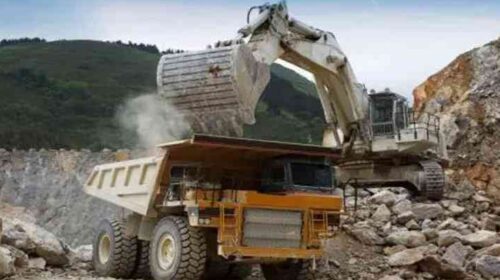Zambia’s decline against DRC’s copper production
Zambia is now one of the ten least attractive jurisdictions in the world for mining investment, according to the Fraser Institute’s 2019 Annual Survey of Mining Companies, released earlier this year.
But this has not always been the case. It is the first time that Zambia has found itself in the bottom 10 of the 76 participating jurisdictions, with its ranking having dropped drastically in 2019 compared to previous years, writes CHANTELLE KOTZE
The Fraser Institute’s Annual Survey of Mining Companies provides a comprehensive report on government policies that either attract or discourage mining investment, typically used by companies, governments and mining ministries to measure their efficacy in attracting investment.
Zambia’s sharp decline unpacked
Zambia’s standing declined drastically in 2019 compared to 2018, 2017, 2016 and 2015. While the country scored 63.60 for investment attractiveness in 2018, this dropped to 37.90 in 2019.
The decline in Zambia’s Policy Perception Index score showed an equally sharp drop, down from 65.25 in 2018 to 38.50 in 2019.
There was increased concern expressed over Zambia’s regulatory inconsistencies, the soundness of the geological database and security within the country and was ranked in the bottom 10 alongside Tanzania and Zimbabwe, which too experienced drastic declines in their Policy Perception Index rankings.
It’s no surprise that Zambia also fell short when measured on its taxation regime, having introduced a new mining tax regime in 2019 which has significantly increased the tax burden on mining companies, making the sector unsustainable and uncompetitive.
According to a source from an African consulting firm, Zambian mining companies faced one of the highest effective tax rates in the world, even before the new mining tax regime was introduced.
“When you consider the high cost profile of the average Zambian mine – several mines of which are more than 70 years old – and the introduction of several hidden taxes such as outstanding VAT refunds and surging power prices, then it’s easy to see why it’s no longer profitable to mine in Zambia,” the source points out.
The current environment where most mines are making losses is simply unsustainable and “something’s gotta give”. The source is hopeful that the Covid-19 pandemic will introduce a level of realism into the government psyche, and that miners and the government will be able to come to an agreement on a number of measures to keep the mining sector liquid and to safeguard jobs during this time of global uncertainty.
What’s self-evident is that the new tax regime has led to a decline in Zambia’s copper output, which is bad for all parties. This has coincided with a 30% drop in copper prices since January 2020, which, judging by the drop in oil prices, may fall even further.
By comparison with the Democratic Republic of Congo (DRC), this does not bode well for Zambia. Despite a change to the country’s new Mining Code, copper production has not suffered and in fact improved in 2019.
“[Zambia’s] comparative performance against the DRC is certainly now a growing cause for concern since copper mine output there jumped 12.6% year-on-year in the first half of 2019 to 672 000 t, compared to 597 000 t in the prior year period.
“Last year, the DRC raised its copper mining royalty fees from 2.0% to 3.5%, although its cobalt fees were trebled to 10% as it declared cobalt to be a strategic mineral,” says metals and minerals research and consulting firm Roskill.
By comparison, provisional data from the Zambian Chamber of Mines revealed a 4% year-on-year decline in total copper mine production in the first half of 2019 from 411 000 t to 393 000 t.
The source says that the ‘Zambian dividend’ – a term coined by former CEO of Rio Tinto and Vedanta Resources Tom Albanese to reflect the deep affinity and empathy that Zambian politicians and regulators have historically shown towards the mining industry – has been woefully absent in recent years. Why?
In seeking to answer ‘why’, two factors dominate.
The first is Zambia’s highly indebted position. Unprecedented sums of money have been borrowed by President Edgar Lungu’s administration, leading to debt distress and the real prospect of imminent debt default.
The second is a lack of trust. A ‘them and us’ culture characterises the way the government thinks about the mining industry today, exemplified by the decision to seize control of Konkola Copper Mines last year – a measure which, no matter how popular among some residents of Chingola, has further eroded investor confidence in the country’s mining sector.
Both factors have led President Lungu’s administration to tax ‘foreign miners’ to the brink and as a consequence, the industry is now presented with unsustainable costs of doing business
The Zambia Chamber of Mines presented an assessment in March of the implied costs of Covid-19 on the country’s mining sector. Faced with the real prospect that some mines may have to shut down, the source remains optimistic that the government will grant a number of concessions to the industry – the failure to do so will hurt all Zambian stakeholders.
Source: mining review





